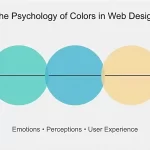Greetings, intrepid choice-makers and chance-takers! Have you ever pondered why you’re more likely to clutch that crisp $20 bill close to your chest rather than wager it on a coin toss, yet you’ll eagerly part with the same amount for a fistful of lottery tickets and a dream of striking it rich?
Fasten your seatbelts and hold onto your hats, folks, because we’re about to embark on a thrilling journey through the fascinating realm of Prospect Theory – the psychological adventure that unravels the mysteries behind our often perplexing decisions in the face of risk and uncertainty.
Prospect Theory Explained: How People Really Make Decisions Under Risk
Hey there, risk-takers and decision-makers! Ever wonder why you’d rather keep that $20 bill in your pocket than risk it on a game of chance, but you’d happily splurge $20 on lottery tickets for a shot at millions? Well, buckle up, buttercup, because we’re about to dive into the wild world of Prospect Theory – the psychological rollercoaster that explains why we make the (sometimes crazy) decisions we do when faced with risk and uncertainty.
The Dynamic Duo: Kahneman and Tversky’s Brain Child
Picture this: It’s the 1970s. Disco is king, bell-bottoms are all the rage, and two brilliant psychologists, Daniel Kahneman and Amos Tversky, are about to drop a bomb on the world of economics and decision-making. No, not a disco bomb (though that would’ve been groovy) – I’m talking about Prospect Theory, the revolutionary idea that would eventually win Kahneman a Nobel Prize and change how we understand human behavior forever.
Fun Fact: Kahneman and Tversky were such close collaborators that they finished each other’s sentences. Talk about academic soulmates!
What’s the Big Deal About Prospect Theory?
Alright, so why should you care about some fancy-schmancy theory from the ’70s? Well, my friend, Prospect Theory is like the Swiss Army knife of decision-making models. It explains everything from why you can’t resist a good sale (even when you don’t need anything) to why world leaders make seemingly irrational choices in times of crisis. It’s the secret sauce that makes sense of our often nonsensical behavior when it comes to risk and reward.
The Old School: Expected Utility Theory
Before we dive into the juicy bits of Prospect Theory, let’s take a quick trip down memory lane to its predecessor: Expected Utility Theory. This old-school model assumed that people were perfectly rational beings who always made decisions based on the expected outcome’s utility (fancy word for usefulness or satisfaction).
Imagine if we all made decisions like Mr. Spock from Star Trek – coldly logical and always optimal. That’s what Expected Utility Theory thought we did. Spoiler alert: We don’t. 🖖
Enter Prospect Theory: The Reality Check
Kahneman and Tversky looked at Expected Utility Theory and said, “Nah, that’s not how humans roll.” They realized that people are more complex (and, let’s face it, more irrational) than that. Prospect Theory accounts for our quirks, biases, and the fact that we’re often more scared of losing our shirt than excited about potentially gaining a new wardrobe.
The Key Ingredients of Prospect Theory
1. Loss Aversion: The “Ouch” Factor
Loss aversion is the heavyweight champion of Prospect Theory. It’s the idea that losses loom larger than gains. In other words, losing $100 hurts more than winning $100 feels good. It’s like stubbing your toe – the pain is way more intense than the pleasure of… well, not stubbing your toe.
Pro Tip: Next time you’re negotiating, remember that the other person is probably more afraid of losing than excited about gaining. Use this knowledge wisely, young Padawan.
2. Reference Dependence: It’s All Relative, Baby
We don’t evaluate things in absolute terms; we compare them to a reference point. This reference dependence means that our happiness with an outcome depends on what we’re comparing it to.
For example:
-
Getting a $1000 bonus when you expected $500? Woohoo! 🎉
-
Getting a $1000 bonus when you expected $2000? Womp womp. 😒
Same amount, different feels. It’s not about what you have, it’s about what you think you should have.
3. Probability Weighting: When 1% Feels Like 50%
Humans are notoriously bad at dealing with probabilities. We tend to overweight small probabilities and underweight medium to large probabilities. This probability weighting explains why people buy lottery tickets (overweighting the tiny chance of winning) but also why they’re afraid of flying (overweighting the minuscule chance of a crash).
Reality Check: You’re more likely to be struck by lightning while doing the Macarena than to win the lottery. But hey, don’t let that stop you from dreaming!
4. The S-Shaped Value Function: The Emotional Rollercoaster
Imagine a graph that looks like a lopsided “S”. That’s the value function in Prospect Theory. It shows that:
-
In the realm of gains, we’re risk-averse (the curve is concave)
-
In the realm of losses, we’re risk-seeking (the curve is convex)
-
The loss part is steeper than the gain part (hello, loss aversion!)
This S-shaped curve explains why we might reject a bet with a 50/50 chance of winning $110 or losing $100, even though the expected value is positive. The potential pain of losing $100 outweighs the potential pleasure of gaining $110.
Prospect Theory in Action: Real-World Examples
Finance: Why Your Investment Strategy Might Be Whack
Ever wonder why you hold onto losing stocks too long but sell winners too early? That’s the disposition effect, baby, and it’s all thanks to Prospect Theory. You’re loss-averse, so you hang onto losers hoping they’ll bounce back, and you sell winners too soon because you’re afraid of losing those sweet, sweet gains.
Pro Tip: Next time you’re tempted to sell a winning stock, ask yourself: “Would I buy this stock at its current price?” If the answer is yes, maybe hold onto it a bit longer.
Marketing: Why “Don’t Miss Out!” Works Every Damn Time
Marketers love Prospect Theory because it explains why framing matters so much. “Get 20% extra free!” sounds way better than “20% off,” even though they might amount to the same thing. Why? Because one frames it as a gain, and the other as avoiding a loss. And we all know how much we hate losing.
Policy-Making: Nudging People Towards Better Choices
Governments and organizations use Prospect Theory to design “nudges” – small changes in how choices are presented that can lead to big changes in behavior. For example, making organ donation the default option (so people have to opt-out rather than opt-in) has dramatically increased donation rates in some countries.
Fun Fact: The guy who came up with nudge theory, Richard Thaler, also won a Nobel Prize. Apparently, figuring out how to trick people into making better decisions is Nobel-worthy stuff!
The Dark Side of Prospect Theory: Cognitive Biases
While Prospect Theory explains a lot about human behavior, it also highlights some of our not-so-great tendencies. Here are a few cognitive biases that Prospect Theory helps explain:
-
Sunk Cost Fallacy: Why you finish that terrible movie just because you’ve already watched an hour of it.
-
Endowment Effect: Why you think your old junk is worth more than it actually is.
-
Status Quo Bias: Why you stick with your crappy phone plan even when better options are available.
Reality Check: We’re all susceptible to these biases. The first step to overcoming them is recognizing they exist. You’re welcome.
So, What Now? Using Prospect Theory to Level Up Your Life
Now that you’re armed with this knowledge, how can you use it to make better decisions?
-
Reframe Your Choices: Instead of focusing on what you might lose, try to frame decisions in terms of what you might gain.
-
Check Your Reference Point: Are you basing your happiness on realistic expectations?
-
Beware of Overweighting Small Probabilities: Don’t let the allure of a small chance of a big win cloud your judgment.
-
Embrace a Little Risk: Remember, being too loss-averse can mean missing out on great opportunities.
The Bottom Line: We’re All a Little Irrational (And That’s Okay)
Prospect Theory shows us that we’re not the perfectly rational beings economists once thought we were. We’re emotional, we’re biased, and we’re really bad at dealing with probabilities. But you know what? That’s what makes us human.
Understanding Prospect Theory doesn’t just make you better at decision-making; it makes you more empathetic to others’ choices. Next time your friend makes a decision that seems totally bonkers to you, remember – they’re probably just being a typical, loss-averse, reference-dependent human.
So go forth, make decisions, take (calculated) risks, and remember – whether you’re facing gains or losses, it’s all about perspective. And maybe buy a lottery ticket once in a while. You know, for science. 😉









